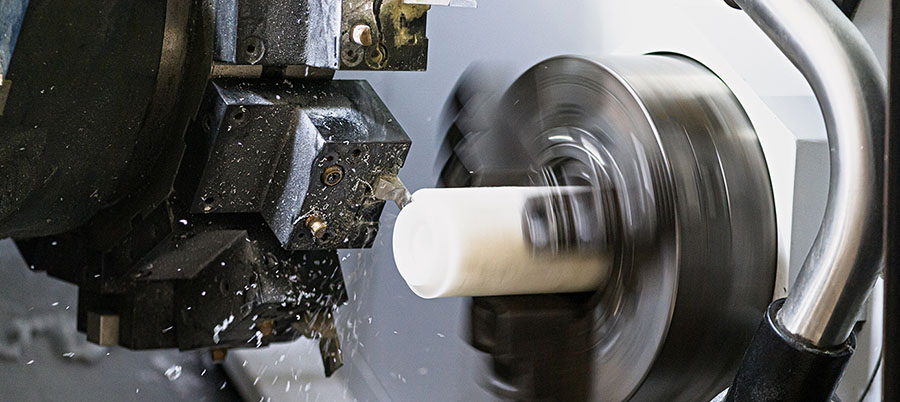CNC machining offers unparalleled precision in the manufacturing of parts for various industries, including aerospace, automotive, electronics, medical devices, and consumer products. While metals are often the first material that comes to mind when thinking about CNC machining, plastics also play a crucial role in modern manufacturing due to their versatility, lightweight properties, and ease of machining. Selecting the right plastic for CNC machining is critical to ensuring optimal performance, cost-effectiveness, and quality.
This article introduce the key factors that should guide your decision-making process when selecting plastics for CNC machining, covering common plastic types, their properties, and the best use cases for each.
Factors to Consider When Selecting CNC Plastics
Selecting the right plastic for CNC machining involves evaluating various factors based on the part’s intended application, environmental conditions, and manufacturing requirements. Key factors to consider include:
Mechanical Properties
The mechanical strength, stiffness, and durability of a plastic material are crucial for ensuring that the part performs under the expected load conditions. Some plastics are highly rigid and strong, making them suitable for structural components, while others offer more flexibility or impact resistance.
Thermal Stability
Different plastics perform differently under varying temperatures. When selecting a plastic material for CNC machining, you must assess whether the part will be exposed to high temperatures during operation. Materials with low thermal expansion and high heat resistance are needed for parts that will function in harsh environments.
Chemical Resistance
Chemical exposure is another consideration when selecting CNC plastics. Some plastics are highly resistant to oils, solvents, and acids, making them ideal for parts used in chemical processing or automotive applications. The chemical properties of the plastic must align with the potential chemicals it will come into contact with.
Wear Resistance
Depending on the application, wear resistance can be a critical factor. Plastics with high wear resistance are ideal for parts that will experience frequent motion or friction, such as gears, bearings, and bushings.
Cost and Availability
Plastic materials vary widely in cost. Common plastics like ABS or PVC are relatively inexpensive, while high-performance materials like PEEK or PTFE can be costly. The material’s cost must be weighed against its performance to determine its suitability for the project.
Machinability
Machining plastics requires careful consideration of the material’s machinability. Some plastics are easier to machine, while others may require specialized tools or methods. For instance, certain materials may produce excessive heat during machining, potentially causing melting or warping.
Environmental Requirements
With the increasing awareness of environmental protection, the environmental standards for plastic products are becoming stricter. When selecting plastic materials, factors such as recyclability and the presence of harmful substances must be considered. For example, some biodegradable plastics like Polylactic Acid (PLA) offer excellent environmental performance. After serving their intended purpose, they can naturally degrade, reducing environmental pollution and meeting the requirements for sustainable development.

Common CNC Machined Plastic Materials and Characteristics
Polycarbonate (PC)
Polycarbonate is an engineering plastic with excellent overall performance, featuring high strength, high toughness, high transparency, and good heat resistance. It has outstanding impact resistance, allowing it to withstand cutting forces during CNC machining without cracking. Additionally, PC has good dimensional stability, making it easy to maintain machining accuracy. It is commonly used in manufacturing optical lenses, electronic device housings, medical device components, and more. However, PC has a high melt viscosity and poor flowability, requiring higher temperatures and pressures during processing. It also tends to generate internal stress, so post-processing annealing is necessary to relieve internal stress and prevent deformation.
Acrylic (PMMA)
Acrylic, chemically known as polymethyl methacrylate (PMMA), offers excellent optical properties with a light transmittance of up to 92%, earning it the title of “plastic crystal.” It has high surface hardness, good wear resistance, and is easy to process and form. During CNC machining, acrylic can achieve a smooth surface through precision cutting, making it ideal for applications such as signage, light fixtures, display racks, and more. However, acrylic’s heat resistance is relatively poor, and it tends to soften and deform at high temperatures. Therefore, the cutting temperature must be strictly controlled during machining to avoid overheating and material damage.
Nylon (PA)
Nylon is a widely used engineering plastic known for its excellent wear resistance, self-lubrication, and chemical corrosion resistance. It has high mechanical strength, allowing it to withstand significant loads. In CNC machining, nylon can be processed into various mechanical parts, such as gears, bearings, pulleys, and more, through operations like drilling and milling. However, nylon has a high moisture absorption rate, which affects its dimensional stability and mechanical properties. Therefore, drying treatment is necessary before machining, and moisture control is important during storage and use.
Polyoxymethylene (POM)
Polyoxymethylene (POM) is a material with high hardness and rigidity, excellent dimensional stability, and a low friction coefficient, making it an ideal material for mechanical components. During CNC machining, POM offers good machinability and can achieve high surface finish quality. It is commonly used to manufacture precision components such as gears, cams, valves, and more. However, POM has poor thermal stability, with a narrow machining temperature range, and it can decompose during processing, releasing irritating gases. Therefore, it is essential to strictly control the temperature during machining and implement proper ventilation and protective measures.
Polyetheretherketone (PEEK)
Properties: PEEK is a high-performance thermoplastic that offers exceptional strength, high-temperature resistance, and chemical resistance. It has excellent dimensional stability and can withstand harsh environmental conditions.
PEEK is used in industries such as aerospace, medical devices (e.g., implants), and automotive for high-stress, high-temperature components like seals and bearings.
Polytetrafluoroethylene (PTFE)
Properties: PTFE, also known as Teflon, has outstanding chemical resistance and low friction properties. It is non-stick and highly resistant to extreme temperatures and environmental factors. Applications: PTFE is ideal for applications involving sealing, gaskets, and bearings, particularly in the chemical and food industries, where chemical resistance is critical.
Case Analysis of CNC Machining Plastic Material Selection
CNC Machining of Electronic Device Housings
In the CNC machining of electronic device housings, materials are typically required to have good mechanical strength, insulating properties, and aesthetic quality. Polycarbonate (PC) is a commonly used material for electronic device housings due to its high strength, toughness, and excellent insulation properties. For example, the housing of a certain brand of laptop is made from PC material, and through the careful selection of tools and cutting parameters, the machining process not only ensures the dimensional accuracy and surface quality of the housing but also improves machining efficiency. Additionally, the flame-retardant properties of PC meet the safety requirements for electronic devices.
CNC Machining of Medical Device Components
Medical device components have extremely high demands in terms of material biocompatibility, corrosion resistance, and machining precision. Polyetheretherketone (PEEK) is a high-performance engineering plastic with excellent biocompatibility, high-temperature resistance, and mechanical properties, making it ideal for CNC machining of medical device components. For example, PEEK is used in the machining of artificial joint components, providing the necessary strength and wear resistance while reducing potential allergic reactions associated with metal materials, thus improving patient comfort and treatment outcomes.
Conclusion
CNC machining offers tremendous versatility when it comes to working with plastics. By understanding the various properties of each plastic material and how they perform in different machining applications, manufacturers can select the best material for each specific need. From high-performance materials like PEEK and PTFE to more economical options like ABS and PVC, each plastic offers unique advantages for different applications. The right plastic choice will enhance the performance, reliability, and longevity of machined components while ensuring efficient manufacturing processes.



